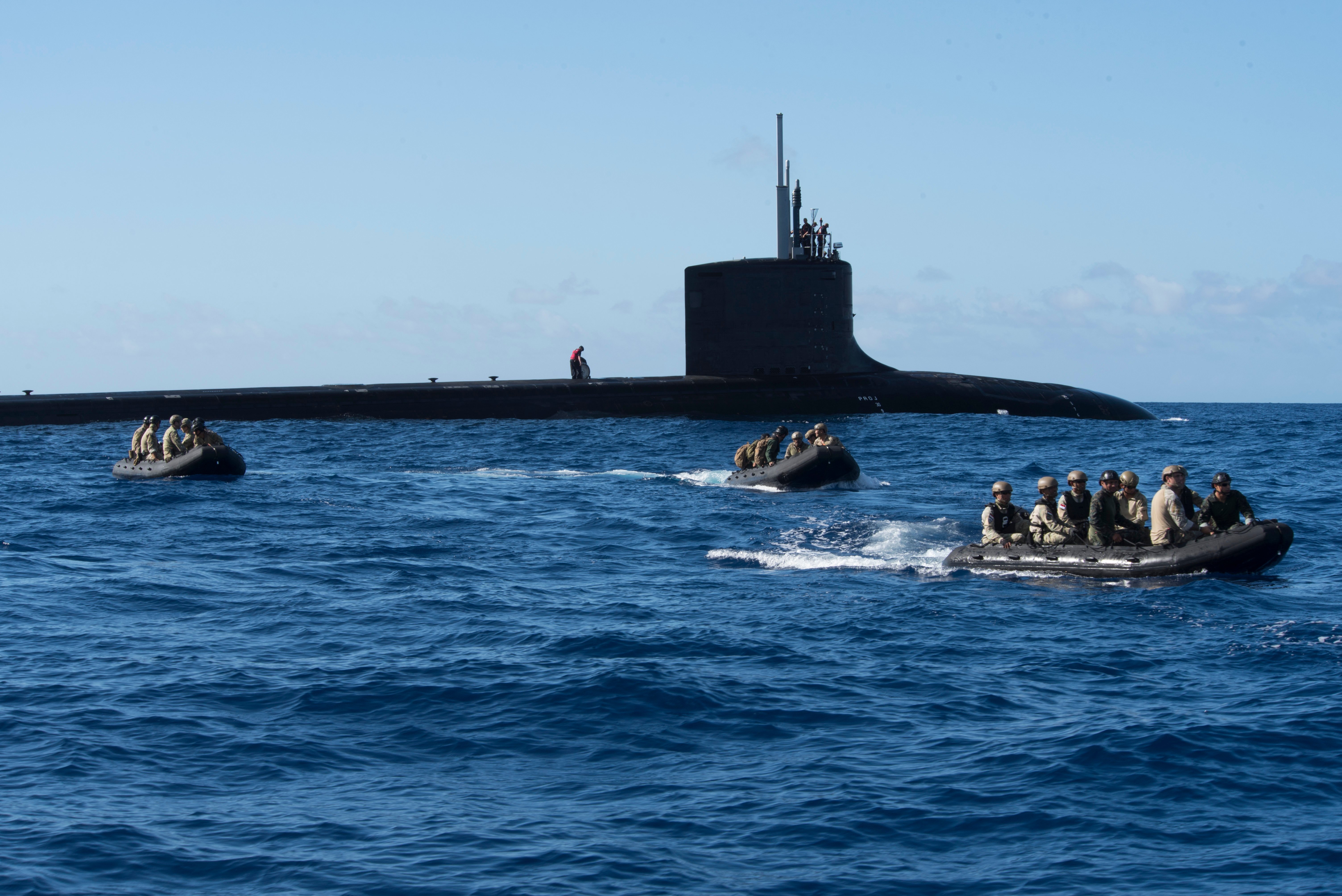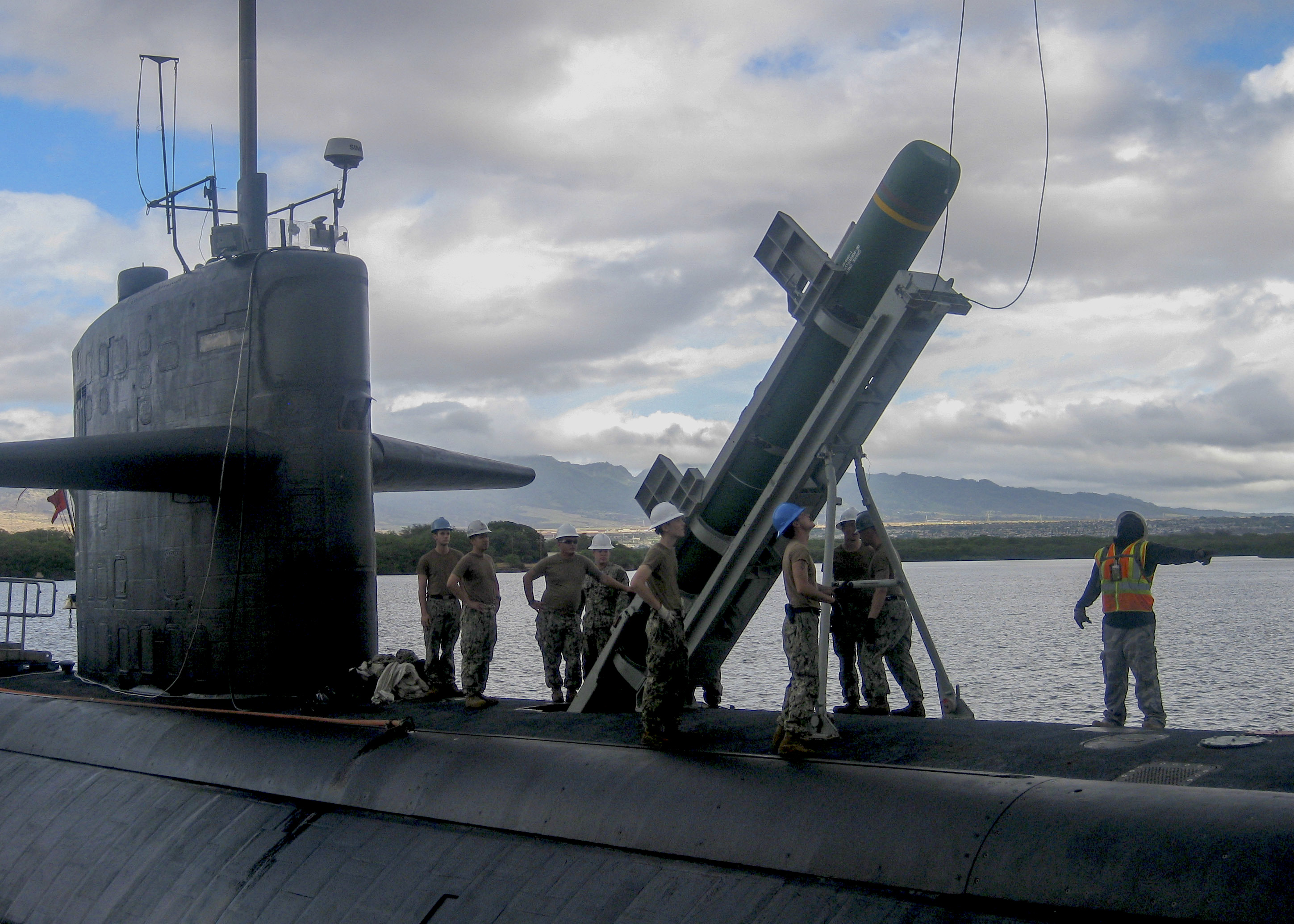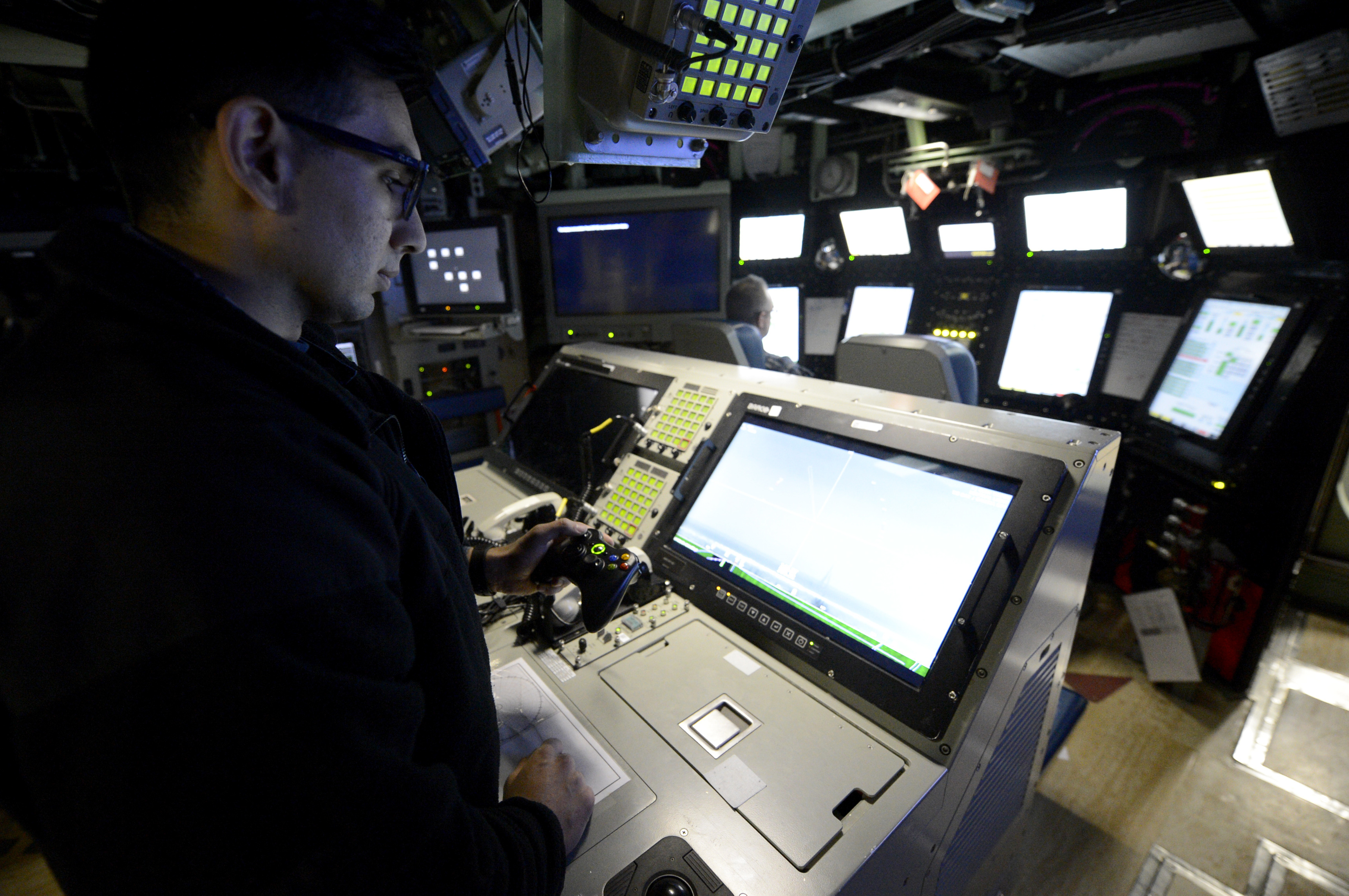
ARLINGTON, Va. – With the Columbia ballistic missile submarine program set to take up a large portion of Navy shipbuilding funds in the next two decades and flat budgets expected in the near-term, the Navy’s undersea warfare community has clearly prioritized where any available funds should go to support the National Defense Strategy.
With the Columbia SSBN program and the strategic deterrence it provides being a clear top priority, the Navy’s undersea warfare director said, the submarine community views increasing lethality as a second priority and then creating a networked undersea domain as a third priority.
Rear Adm. Thomas Ishee said during this week’s Naval Submarine League’s annual symposium that flat budgets in the future would equate to diminished buying power due to inflation and rising costs, “so it’s going to be very important for us to really solidify and stick to our priorities, which are, in the strategy for resourcing: strategic deterrence is number one, there’s no doubt that we are going to fund that. We need to fund that in a responsible way that does not adversely affect the other programs that we have. Increasing lethality; again, to me that means the Virginia Payload Module, the advanced payloads and integration of those. And then to move farther into this domain-centric warfare in the undersea domain. Take the capabilities that we have; add to them; [add] command, control and communication to them; be able to display and use that in a common operating picture.”
On the lethality piece, Ishee said the Virginia Payload Module added to the Block V Virginia-class attack submarine design would be a good near-term step to increase the lethality of the force. VPM brings the subs from 12 missile tubes to 40, helping to make up for the loss of four Ohio-class guided-missile submarines (SSGNs) strike missile platforms as they retire from service. He said the VPM would also be ready to carry future advanced payloads as they come into the fleet.
In the mid-term, Ishee said lethality would be boosted by investments in new sensors and payloads and increased range of weapons, to give the Navy more options to use submarines to go after undersea, surface and land targets.
“We’re working to develop advanced missiles and undersea payloads to expand the competitive space while growing longer arms,” he said.
As examples, Ishee said the first refurbished Harpoon anti-ship missile would be delivered to the submarine fleet in Fiscal Year 2021. The Tomahawk land-attack missile, which the submarine community has used for decades, would be supplemented with a maritime strike variant for surface engagements at longer ranges “and a joint multiple-effects warhead system to expand the Tomahawk target sets.” Investments in hypersonics and supersonics would benefit the submarines’ weapons inventory as well, and a spiral development approach on the Navy’s heavyweight torpedo program would yield longer ranges and “versatile payloads” for various effects.

Asked afterwards what kinds of additional “advanced payloads” the Navy was seeking, Ishee told USNI News that “right now the priorities in the short term are mostly about enabling kinetic payloads with longer range. As I look to the future, I think more about electromagnetic warfare kind of payloads, about all I can say about that. But lot of the effects that we are having success with in other domains, we need to be able to generate those effects from the undersea.”
He said those capabilities are being laid into the Tactical Submarine Evolution Plan (TSEP) that outlines capabilities to be introduced to the force, but he added they were not yet being added into funding plans.
In the long term, Ishee said, lethality would be boosted by the SSN(X) program. As the Virginia class bumps up against its power and space margins for new capabilities, SSN(X) will be designed to have improved mobility, speed and stealth; greater magazine size and payload integration capability; artificial intelligence to increase warfighter decision space; and improved survivability, so the hull could take a hit and keep on fighting in a high-end battle.
Ishee said top-level requirements have been discussed for this next-generation boat but that the requirements would be finessed over the next year. He said he expected SSN(X) to be a revolutionary change in submarine capabilities, instead of the evolutionary change the Virginia class has brought since its design began after the Cold War. The timing of the start of the SSN(X) program remains unclear, he said.
The third priority for Navy undersea warfare funding is to move from a platform-centric approach to a domain-centric approach. Investments in the last decade in the P-8A Poseidon maritime surveillance airplane, helicopter-based and destroyer-based sensors, undersea surveillance systems and unmanned underwater vehicles have completely changed the ability to understand what’s happening under the water, and the service needs to connect the information to create a larger common operating picture (COP), as well as view financial investments in a holistic way, Ishee said.

As a mid-term effort, Ishee said he hoped to see the creation of an undersea test bed, a government-furnished test range where companies or government labs could bring sensors, communications suites, weapons, unmanned vehicles and more “to test and compete different technologies in a competitive environment – so run these through battle scenarios to see how well new ideas and technologies are able to adapt and be used.”
Asked by USNI News during a question-and-answer session what investments he most wanted to see from industry, Ishee said, “to me, the biggest piece is that communication and command and control piece, and the ability to see in the underwater domain so we can have a COP in the underwater domain. We’re doing pretty well in individual technologies and capabilities as we bring those forward; now we need to be able to link those together so we can use them as one big system.

“So getting to a standard communication package, getting to a standard protocol so that you can take – I’d love to be able to, in my test bed, be able to provide a large diameter UUV that industry could come in and plug in a sonar sensor to a standard interface, plug in a weapon or put a weapon into a payload bay in a standard way, be able to communicate with that UUV and plan it and execute a mission through a standard set of protocols,” he continued.
“So to me it’s all about the command and control and communication, link these things together to be able to get them in the water and see what works in a larger scale, a real-life scale, and then spiral development.”
To aid this effort, Ishee said in response to another question that the TSEP, which outlines desired investments in the submarines themselves, may be supplemented or replaced by an undersea domain evolution plan that looks at the entire domain and ways to grow capability overall in undersea warfare. Funding today is stovepiped by program, he said, which makes it harder to standardize communication links or interfaces, and makes it hard to align funding. A system-of-systems portfolio, and a capability evolution plan to guide it, would help in that effort, he said.
In the long term, Ishee added, he would like to see the submarine force make more progress in seabed warfare and seafloor sensors and effects.





